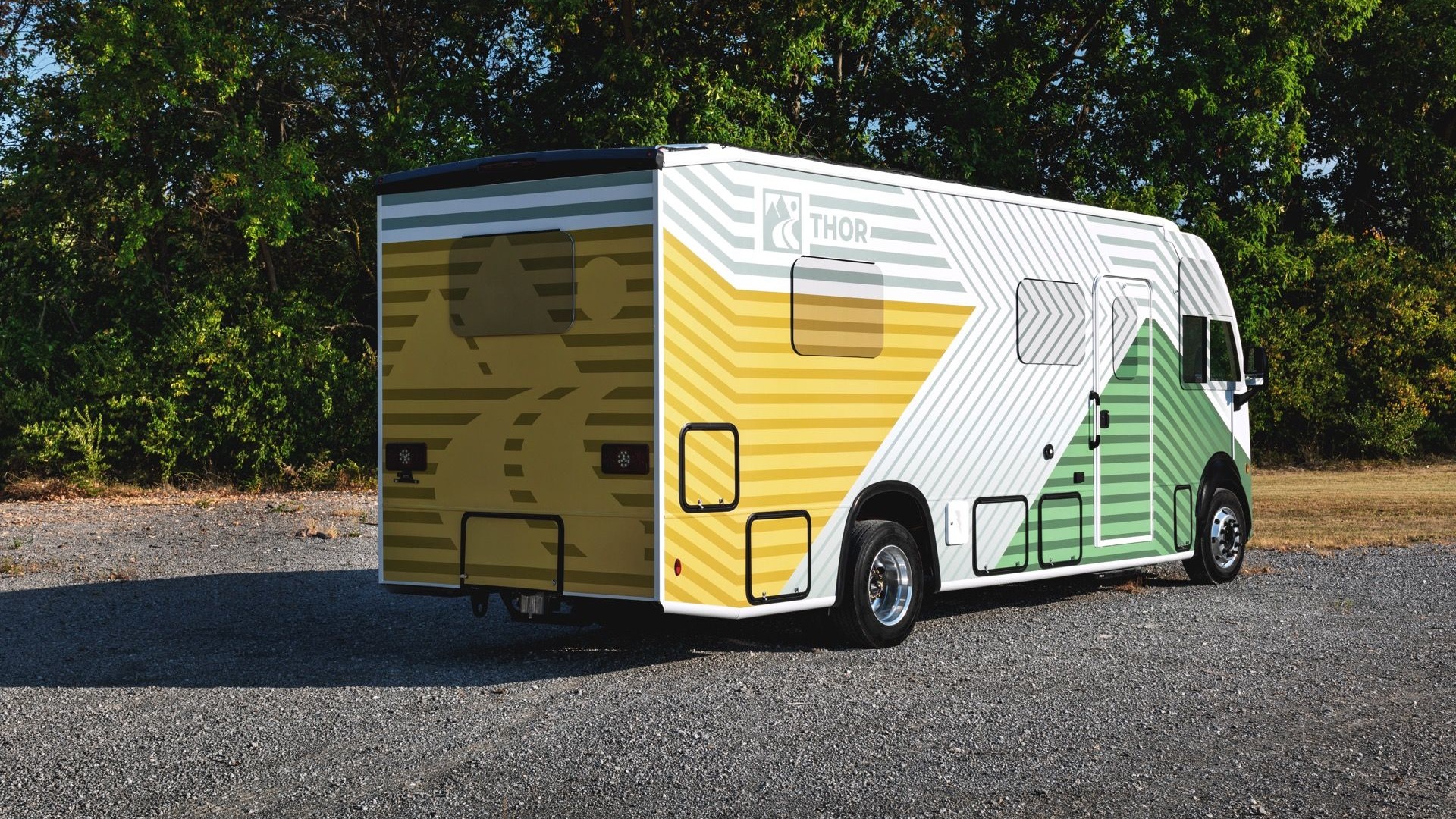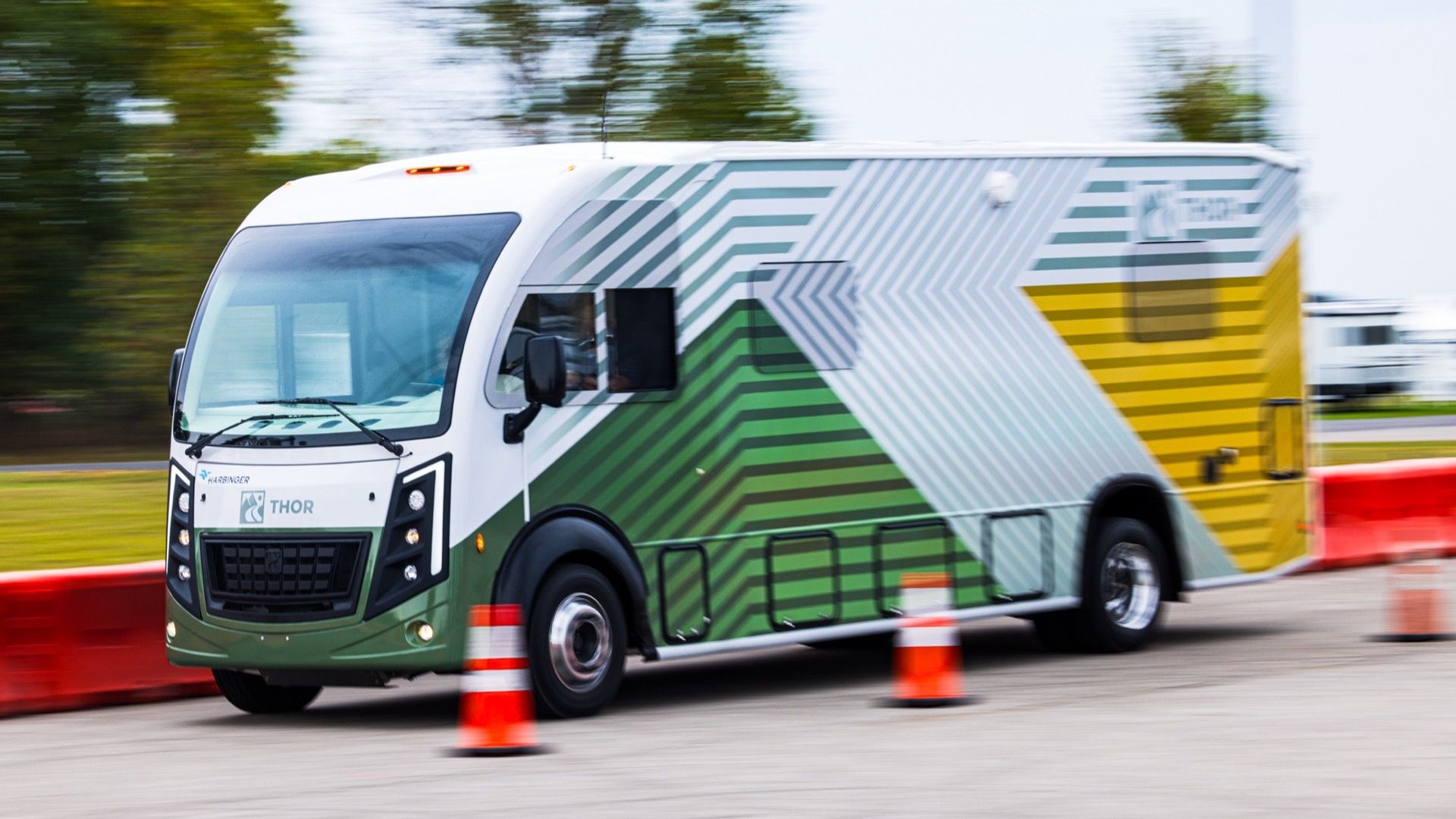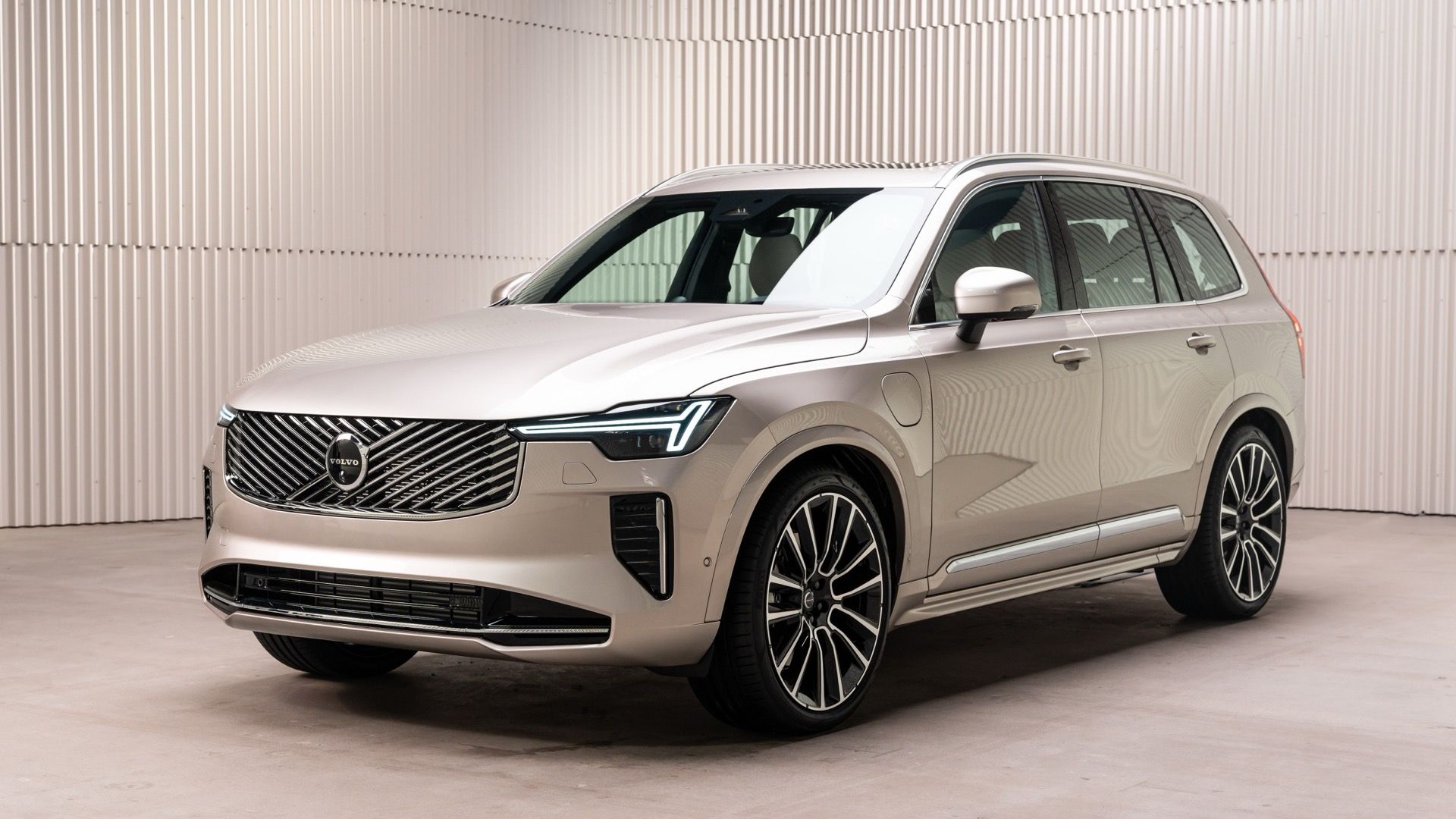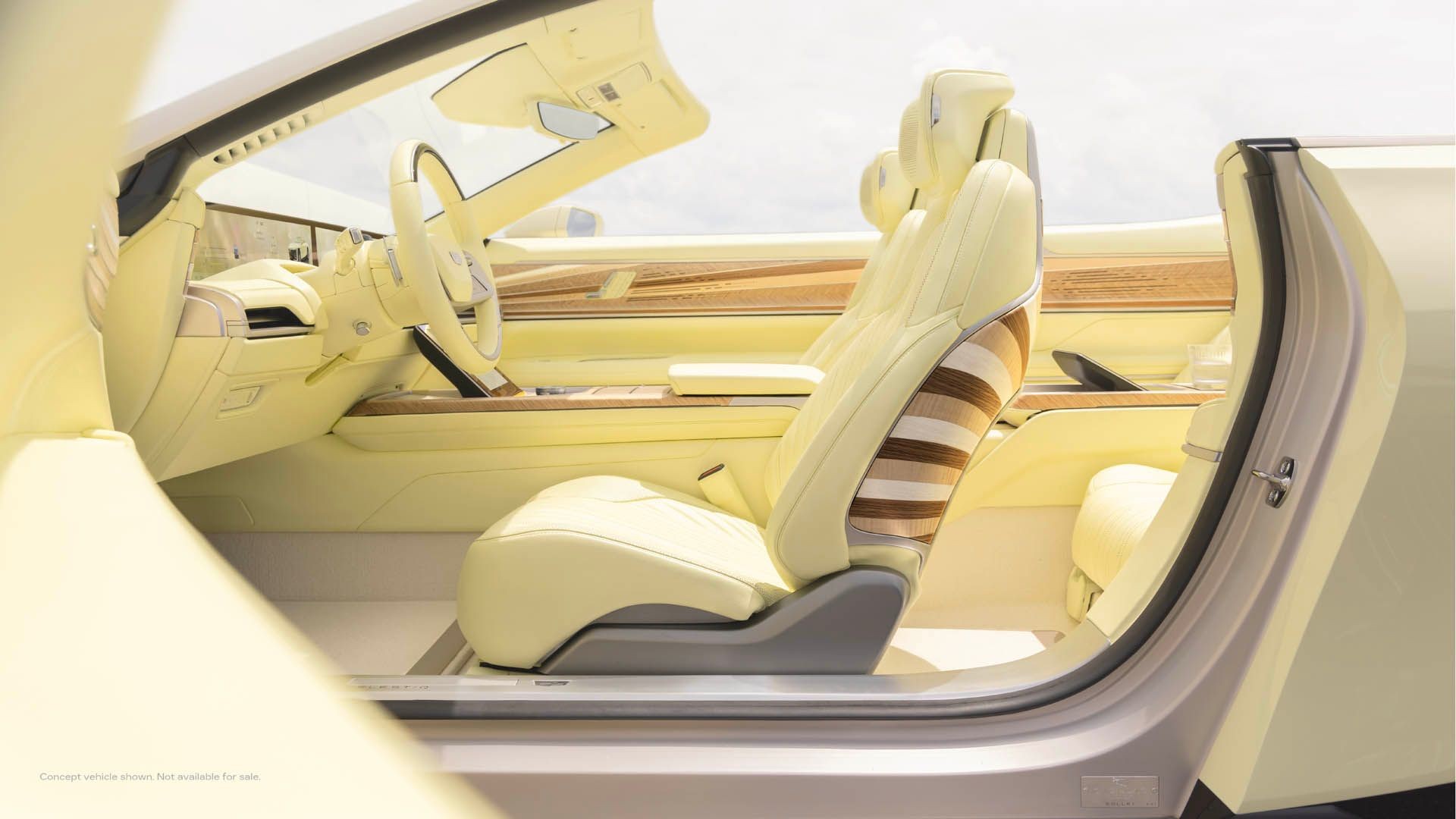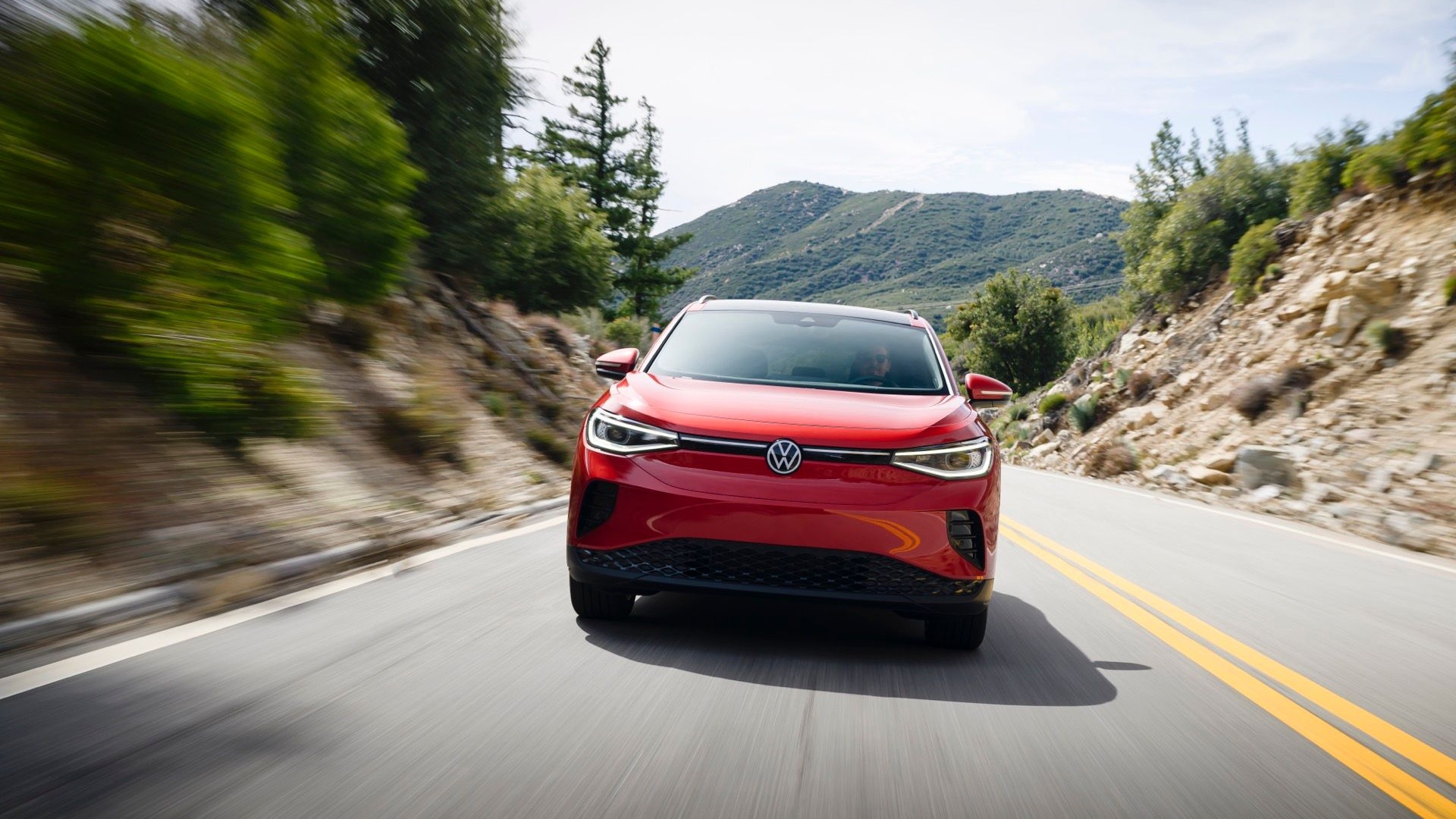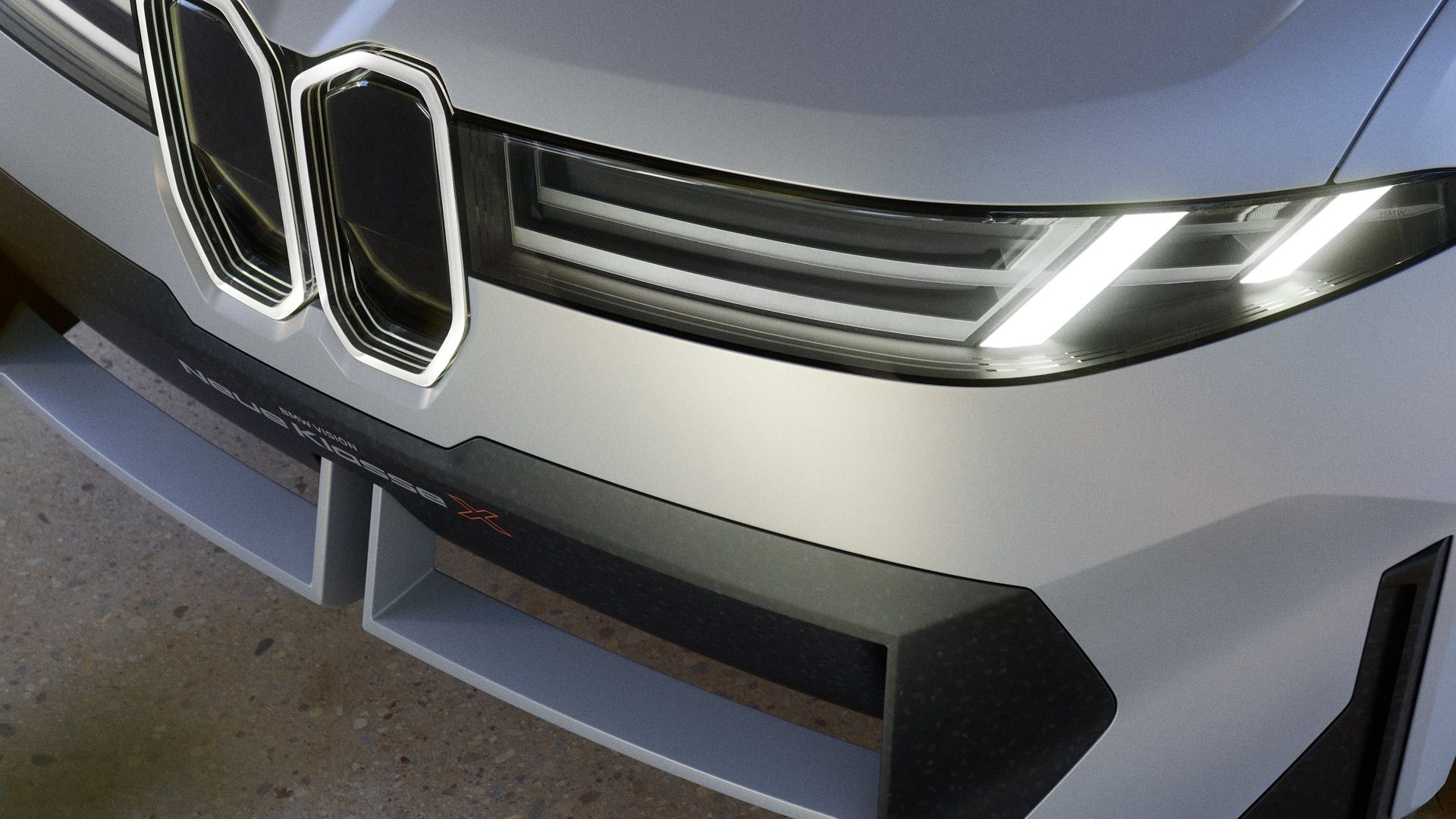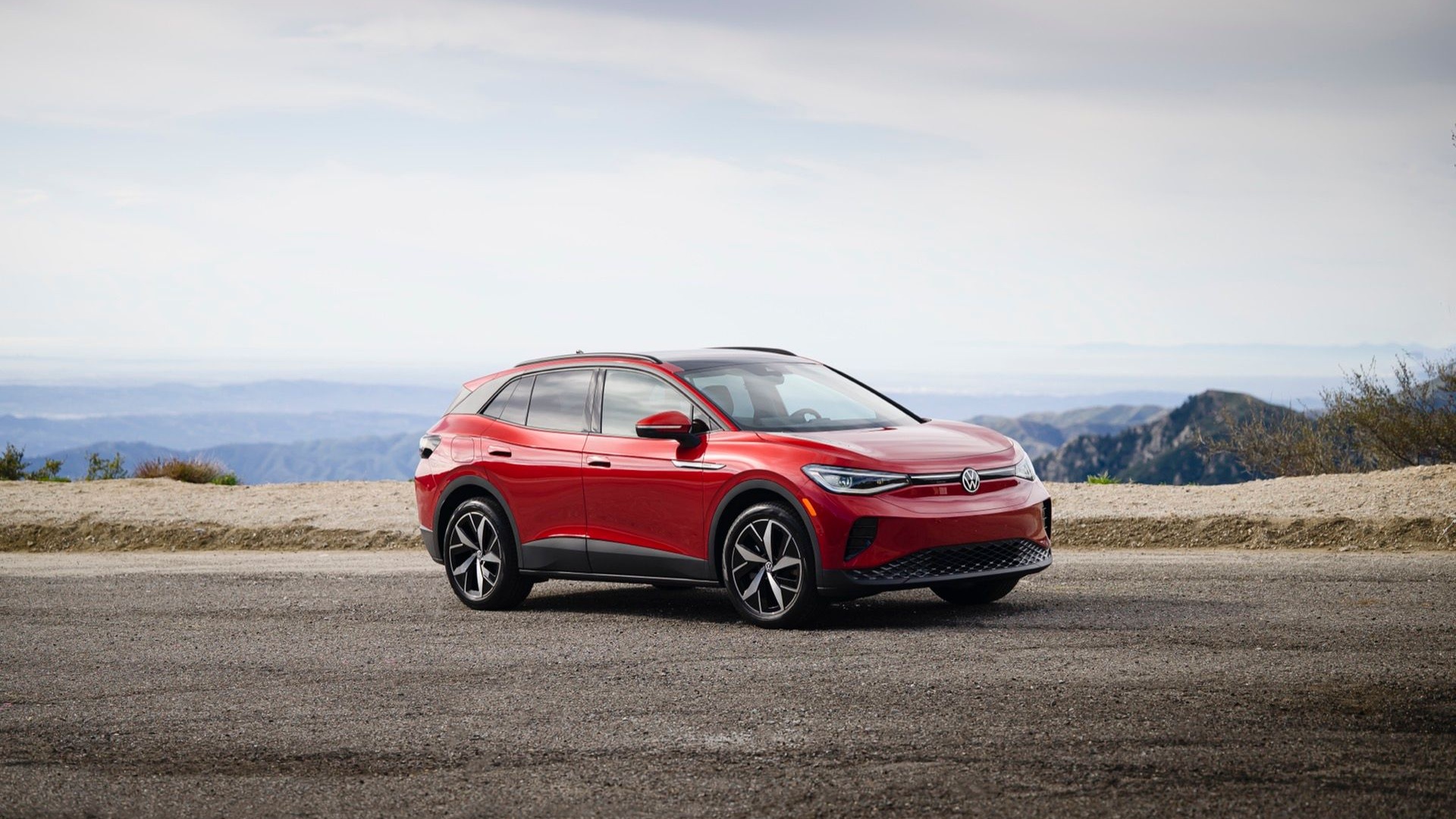- Electric RVs are on the horizon
- Airstream owner Thor Industries revealed a plug-in hybrid RV
- PHEV RVs offer more range for less money than an electric RV
Electric trucks and SUVs have arrived, and in the quest for lower-carbon-impact camping, fully electric RVs aren’t far behind.
While the fully electric vanlife is starting to roll out, the big electric RVs—the motorhomes—are a little farther out as they have their own steeper range and charging challenges. Specifically, as an infrastructure builds out for electric cars, the one to accommodate these big, commercial-truck-sized plug-in vehicles hasn’t yet been upsized for them.
In the meantime, hybrid RVs are a piece that’s been missing from the market, and plug-in hybrid RVs might be the answer to the charging conundrum. Employing a new version of the medium-duty commercial electric truck chassis from Harbinger, a production-bound demonstration RV revealed by Airstream owner Thor Industries Monday claims to be the first hybrid Class A motorhome.
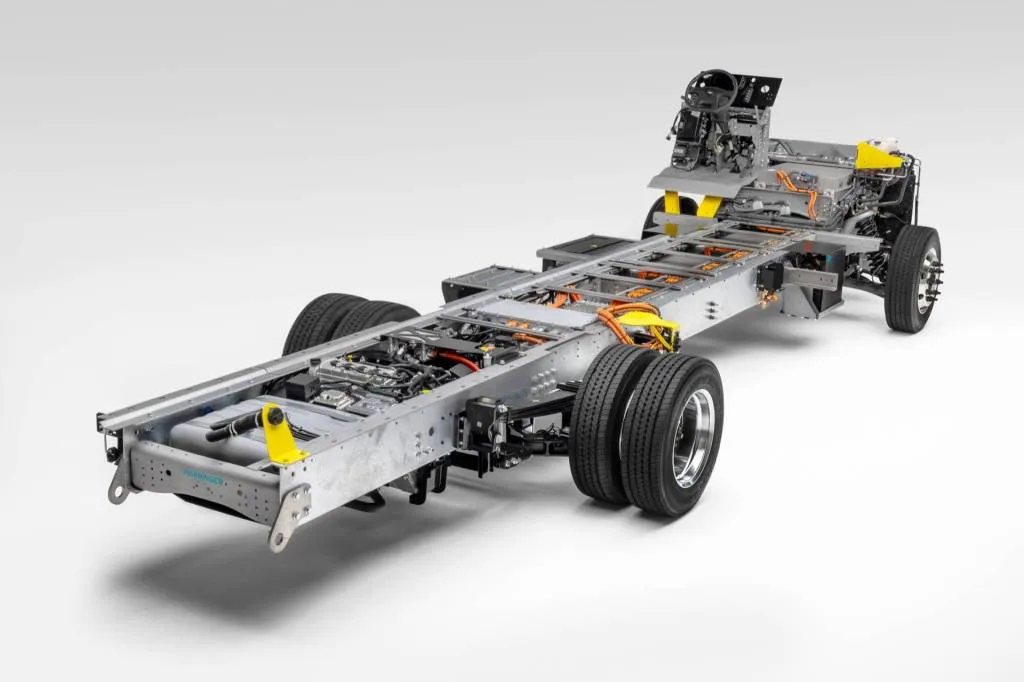
Harginer Hybrid Class A Chassis
RV “top hat” on PHEV, series-hybrid hardware
Total range for this very big PHEV will be about 500 miles, the companies estimate, including a plug-in electric range of around 150 miles, in the configuration presented, including about 350 miles from a gasoline-powered range extender—a four-cylinder engine that has no mechanical connection to the wheels and powers a generator set.
By layout and range, it’s in the same ballpark as what the upcoming 2025 Ram 1500 Ramcharger plug-in hybrid pickup will do, albeit with a V-6.
The partnership mates Harbinger, a startup “chassis company” for commercial trucks, with a mainstay in the RV market. Thor, which has 60% of the U.S. RV market, is Harbinger’s only RV customer. Harbinger has about two dozen commercial customers and is just starting to prove its chassis in real-world use.
Earlier this year Harbinger tallied 4,000 “binding pre-orders” from a range of customers including Bimbo Bakeries, Thor, and Mail Management Systems. In an interview with Green Car Reports about the debut, Harbinger CEO John Harris said that the company has delivered complete chassis assemblies to customers, and they’re “just about to start using those chasses in revenue-generating operations.”
Harbinger delivers the frame, suspension, propulsion system, safety and vehicle systems. From there, it’s a matter of fitting different vehicle “top hats” on top of the chassis—in this case, an RV.
“We focus on it and we aren’t distracted by the million different things people want on the upfit side,” said Harris.
And since the Harbinger chassis is designed for the daily fleet rigors of commercial vehicles, Harris points out that customers will get higher levels of durability than RVs are typically engineered for.
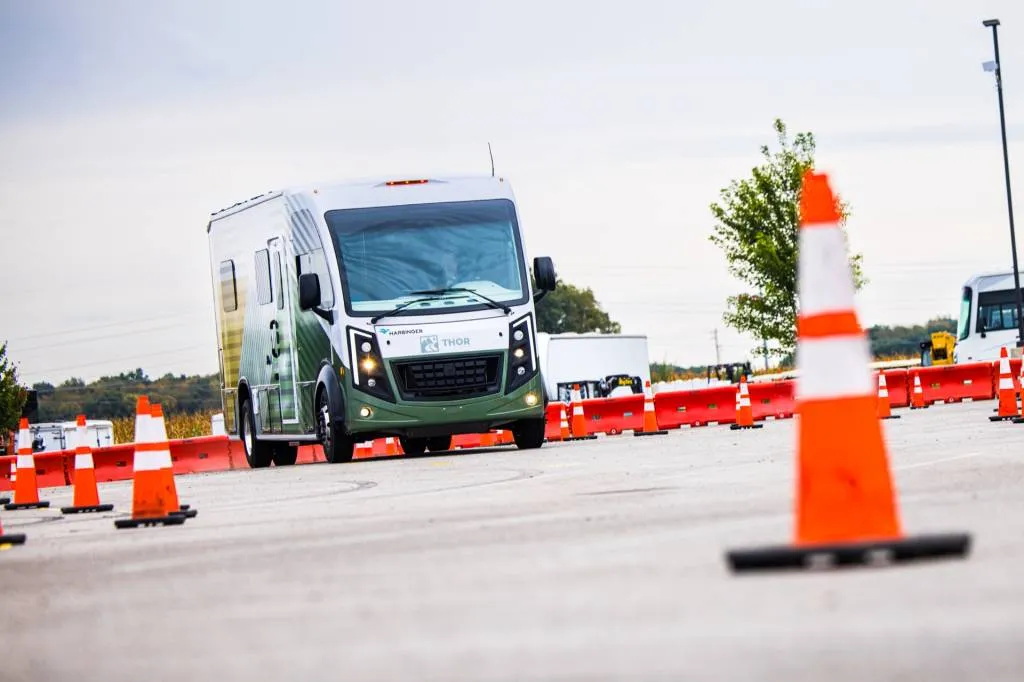
THOR Hybrid Class A Test Vehicle
Twice the torque of diesel
The chassis as used in the RV is built as an 800-volt system and has a permanent magnet electric motor making 440 hp peak (280 hp continuous) and 1,140 lb-ft at the motor. Thor says that’s up to twice the torque of a diesel engine in such an application, and the electric drive unit is good for a 450,000-mile service life. A double-wishbone front suspension and steer-by-wire system aim to make this big vehicle comparatively nimble as well as compatible with advanced driver-assistance and safety systems.
Multiple sets of 35-kwh battery packs are employed to provide 140 kwh here, or up to 175 kwh in production; each has a cast aluminum enclosure and weighs just 462 pounds, fitting neatly between these trucks’ frame rails. It’s likely the Thor application will get that top battery size or close to it, amounting to a total battery weight of around 2,300 pounds.
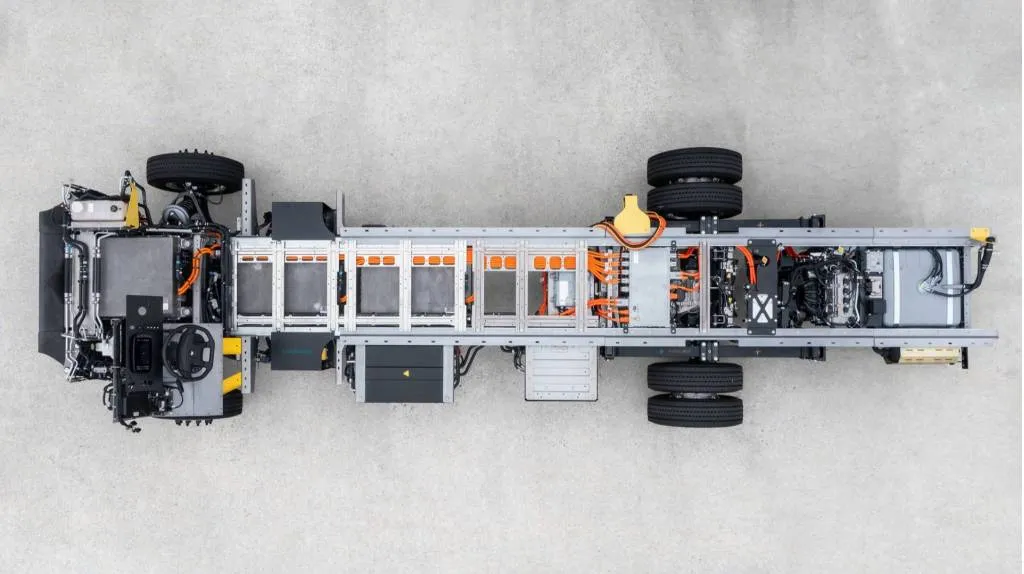
Harginer Hybrid Class A Chassis
Once plug-in battery power falls to a low level, the 1.4-liter naturally aspirated gasoline inline-4 engine fires up. Harbinger CEO Harris called it an “in-production, high-volume, large-OEM engine.” While he wouldn’t say what the peak load of the system will be, he mentioned that maintaining a highway cruising speed in such a vehicle takes around 50 kw.
This is Harbinger’s first application of a range-extender in its electric trucks, Harris confirmed, and it marks the debut of its system with the range extender. Although this type of series-hybrid system has powered locomotives for much of the past century, it’s been slow to catch on for passenger vehicles and light trucks due to noise-and-vibration concerns and poor highway mpg.
“With a series hybrid we have enough electric powertrain capacity to meet all the uses of the vehicle—passing, overtaking, accelerating up a hill, etc.,” he said. “So for the range extender, you need an engine that provides enough power to meet that sort of steady-state cruising, and you want that range-extender engine running at a very efficient operating point.”
In the joint release, the companies promised that the hybrid RV would have what sounds like a very electric driving experience, with “confident and powerful acceleration for merging and mountain driving”—suggesting that Harbinger may be leaving plenty of battery buffer for sudden power needs. To that point, Harris noted that with a series hybrid system, “how much headroom you have on top of that is less relevant.”
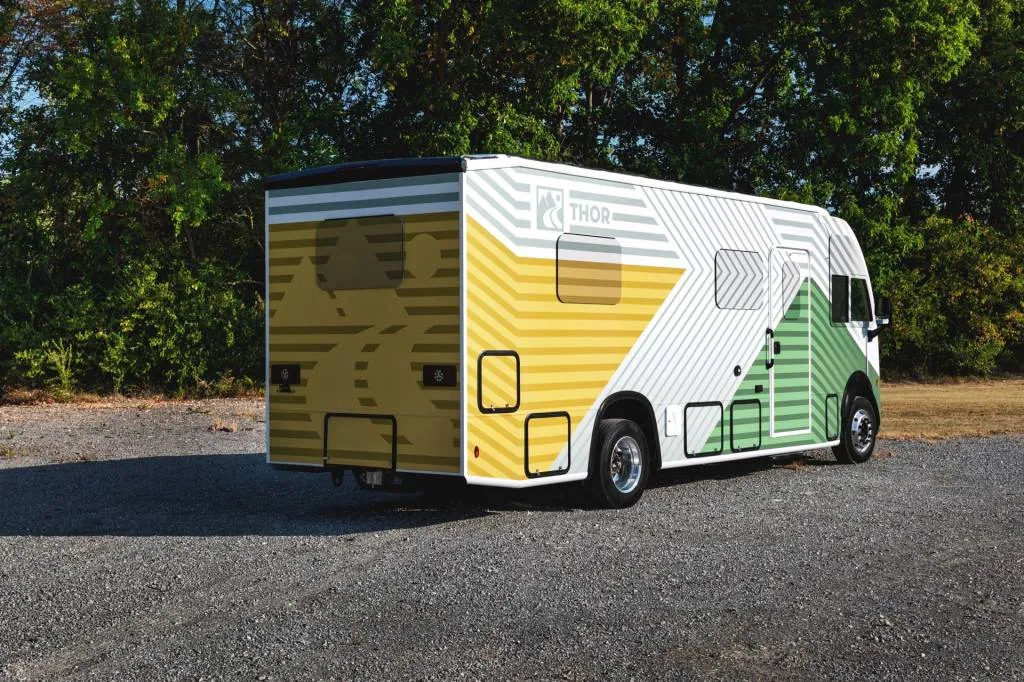
THOR Hybrid Class A Test Vehicle
Good long-trip mpg, plus a battery good for home backup
The RV’s battery pack can be charged via the range-extender engine, via integrated solar cells, and/or via an integrated solar array. The companies noted that the demonstration vehicle has the “ability to serve as a home backup power source,” also with the capability to charge power tools, power campsite accessories, and the like.
They’ll go farther on each gallon of gas, too, whether there’s a plug-in charge or not. A big gasoline RV normally returns gas mileage in the 6-8 mpg range. There will be an efficiency improvement when running as a series hybrid, with no plug-in charge, but Harris doesn’t yet have numbers. When you figure in the initial plug-in charge it will be a massive improvement, he emphasized.
“To go 500 miles on 40 gallons would be an exciting day for most people” he summed, indicating that there’s so much variability in auxiliary loads for RVs that could mean an electric range as low as 125 miles or as high as 200 miles.
“If we just take the range extender out, it’s an all-electric EV, it’s the same platform,” said Harris. “The challenge with that use case is that it’s so high-variability—you might drive 500 miles and then 10 miles—it’s a really difficult use case for pure electric. We can do it for them; the range will be 250-ish miles and it’ll be more expensive because there’s more batteries. The 250-mile mark is something that’s almost compelling for an RV but not quite there and 500 miles is sort of an easy home run. Very few people want to drive more than 500 miles in one shot in an RV.
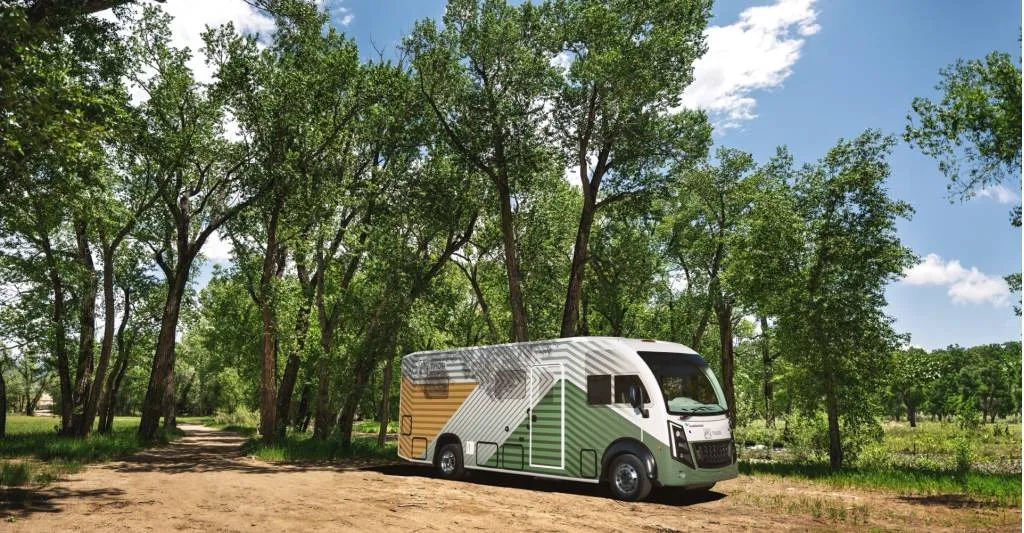
THOR Hybrid Class A Test Vehicle
A usability sweet spot amid EV mandates
Before a pure EV works for an RV, we need to see more energy density, argued Harris—by both weight and per dollar.
“The range-extended platform, the range-extender architecture, that’s absolutely why we’re using it here because it offers more range for less money, so that there’s a more compelling and more cost-effective platform,” he said.
Thor communicated that it will come to one of their operating companies in 2025 and hasn’t yet said which one will feature the plug-in hybrid powertrain. While Airstream might be the obvious one, as it has a history of aero-styled motorhomes starting with the cult-favorite 1970s Argosy line, its RV makers also include Tiffin, Entegra Coach, and Thor Motor Coach.
Whichever brand, the plug-in Thor RV will indeed be a harbinger of the future, in a way that appeases regulators.
“RVs utilizing the hybrid platform will be commercially available in 2025 from the Thor family of companies,” the two companies disclosed. Those RVs will qualify as California Near-Zero Emission Vehicles (NZEV) under CARB’s latest Advanced Clean Truck regulations, they added.
Unless far-out concepts like the Stella Vita electric RV completely remake what larger RVs are, this PHEV might well be how huge RVs up their game into a plug-in future, as RVs that are a bit smaller—previewed by Winnebago and Thor a couple years ago—make their way to production.
Thor Industries says it’s taking this to its dealer open house, starting today, where it’s available for dealer test drives, where they’ll have a chance to “help guide the path to market for this exclusive product.”

